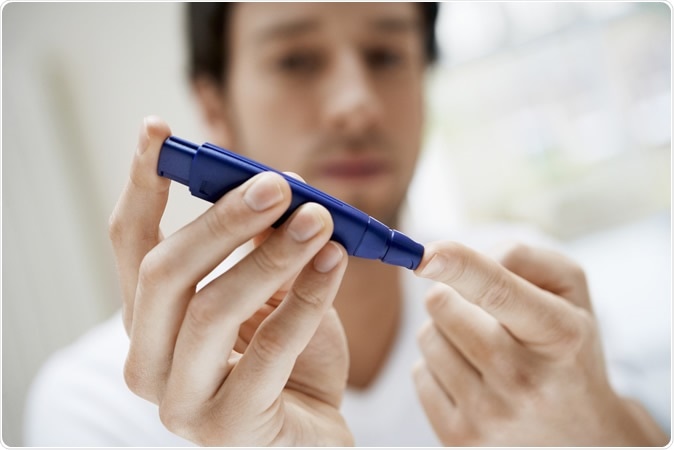The number of people with diabetes has increased from 108 million in 1980 to a staggering 422 million in 2014. In 2016, an estimated 1.6 million deaths were directly caused by diabetes, while another 2.2 million deaths were tied to high blood glucose.

Image Credit: Sirtravelalot / Shutterstock
Many people with diabetes find it difficult to control blood sugar levels, and it takes a lot of effort to live healthily. Now, a team of researchers from Stanford University has developed a novel way to boost the effectiveness of the insulin injections people use routinely to control their blood sugar levels.
The shot is a combination of two diabetes drugs that reduce the number of injections needed for controlling the blood sugar. In the past, patients may need two compounds in separate injections, making it hard for patients to comply with the needed treatment regimen. With just a single shot, both insulin and amylin, a second hormone that plays a vital role in controlling blood sugar levels after eating in a way that is more effective than insulin alone.
Second hormone
With just a single shot, both insulin and amylin, a second hormone that plays an important role in controlling blood sugar levels after eating in a way that is more effective than insulin alone.
The pancreatic beta cells produce amylin, which is essential for endogenous glycemic regulation. Over the past years, doctors treat people with diabetes with an amylin analog, called pramlintide.
The treatment with diabetes using insulin and pramlintide is more effective than treatment with insulin alone. However, scientists in the past had a hard time mixing these two drugs since they are unstable. Since then, the doctors inject the drugs separately. Less than 1 percent of patients with diabetes taking insulin also take the second hormone, since these are unstable to coexist in one syringe.
"Taking that second injection with the insulin shot is a real barrier for most patients. Our formulation would allow them to be given together in a single injection or an insulin pump," Eric Appel, senior author of a research paper and a materials engineer, said.
Breakthrough combination
The novel formulation developed by Stanford scientists uses a molecular wrapper using polyethylene glycol or PEG, which is a common nontoxic chemical used in cosmetics and laxatives. The coating has been engineered to bind to insulin and amylin molecules selectively. It serves as a protective shield for the two hormones until they are injected into the body.
The team used a new type of PEG, which has a molecular Velcro on the end known as cucurbituril-PEG or CB-PEG. The molecular Velcro makes it possible to bind to both insulin and amylin separately reversibly. Once injected into the body, the drugs separate from the CB-PEG and can act unhindered.
The protective coating dissolves in the blood, helping the two hormones work together that is similar to how they function in healthy people.
The team rested the stability of the coating in the laboratory and performed preliminary experiments to see how the two-in-one shot works on diabetic pigs. Still, since the drugs are now commercially available and had been approved by regulatory bodies, the team only needs to show the efficacy of the technique. Further, they only need to prove that the novel technique is nontoxic in humans.
"The co-administration of supramolecular stabilized insulin and pramlintide better mimics the endogenous kinetics of co-secreted insulin and amylin, and holds promise as dual-hormone replacement therapy," the researchers concluded.
With human trials planned, it is a step closer to having the two drugs in one shot in the market, helping people with diabetes manage their blood sugar levels more effectively.
Although a few patients with diabetes take the amylin-based drug after their insulin shot, those who do experience health benefits, such as weight loss and better blood sugar control. Enhancing the management of diabetes through breakthrough techniques can reduce the risk of complications tied to poorly managed diabetes, including vision loss, heart disease, kidney failure, and amputations.
"We're excited about the results, to say the least," Appel said. The team has now applied to patent the new technology, hoping to provide a better way to manage blood glucose levels in diabetes patients, which is a widespread disease worldwide.
The study is published in the journal Nature Biomedical Engineering.
Source:
Journal reference:
- Maikawa, C., Smith, A., Zou, L., Roth, G., Gale, E., Stapleton, L., Appel, E. et al. (2020). A co-formulation of supramolecularly stabilized insulin and pramlintide enhances mealtime glucagon suppression in diabetic pigs. Nature Biomedical Engineering. https://www.nature.com/articles/s41551-020-0555-4